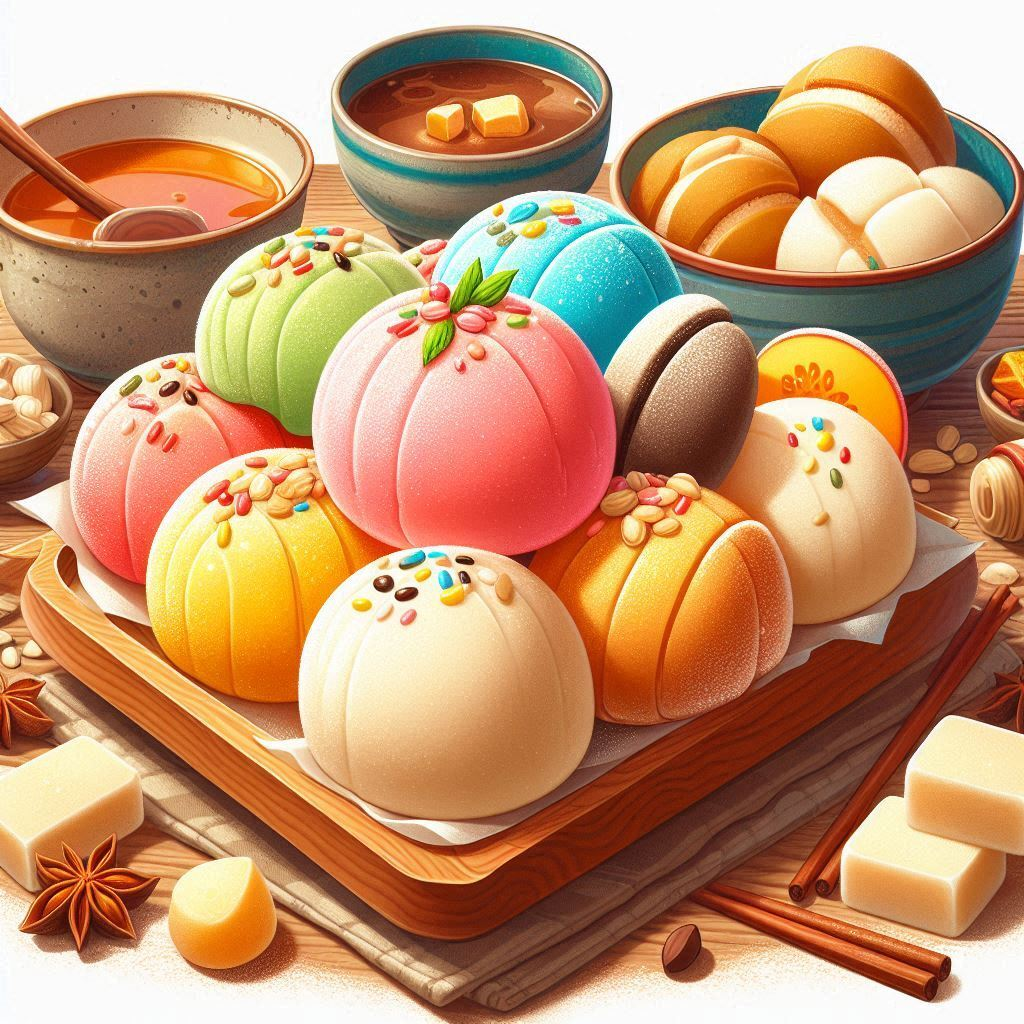
A Journey Through Time: The Story of Mochi
Mochi, the delightful Japanese confection, is more than just a chewy, sweet treat. It’s a story woven through centuries of tradition, cultural significance, and culinary artistry. Let’s embark on a journey to uncover the fascinating history and preparation of this beloved dessert.
From Humble Beginnings to a Cultural Icon
The origins of mochi can be traced back to 794 AD, during the Heian period. Rice cakes, a staple food in Japan, were often pounded into a sticky paste and molded into various shapes. This ancient practice laid the foundation for the mochi we know today.
During the 14th century, mochi gained popularity as a celebratory food, particularly during the New Year festival. The act of pounding mochi was seen as a symbol of good luck and prosperity, and the sticky texture was associated with the hope for a year filled with abundance.
The Art of Mochi Making: A Labor of Love
The traditional method of making mochi involves pounding mochigome, a special short-grain glutinous rice, in a large wooden mortar called a usu. This process, known as mochitsuki, requires strength and precision, as the rice is pounded repeatedly until it becomes a smooth, elastic dough.
The pounding process is often a communal activity, with families and friends coming together to share the task. It’s a tradition that embodies the spirit of togetherness and celebration.
From Simple to Spectacular: The Evolution of Mochi
Over the centuries, mochi has evolved from a simple rice cake into a diverse range of flavors and forms.
Here are some of the most popular mochi varieties:
- Daifuku: These soft, chewy mochi are filled with sweet red bean paste.
- Hishi mochi: These triangular mochi are traditionally eaten during the Hinamatsuri (Doll Festival) and symbolize good luck and prosperity.
- Warabi mochi: These delicate mochi are made with bracken starch and often dusted with kinako (roasted soybean flour).
- Yatsuhashi: These diamond-shaped mochi are flavored with cinnamon and often topped with sugar.
- Mochi ice cream: This modern innovation combines the chewy texture of mochi with the refreshing taste of ice cream.
A Taste of Tradition: Mochi in Modern Japan
Today, mochi remains a beloved staple in Japanese cuisine, enjoyed year-round. It’s a versatile ingredient that can be incorporated into both sweet and savory dishes. From traditional mochi cakes to modern fusion creations, mochi continues to delight taste buds and preserve a rich cultural heritage.
Recipe: A Simple Daifuku Mochi
Ingredients:
- 1 cup mochigome (glutinous rice)
- 1 cup water
- 1/2 cup sweet red bean paste
- 1/4 cup cornstarch
Instructions:
- Rinse the mochigome in a strainer until the water runs clear. Soak the rice in water for 30 minutes.
- Drain the rice and transfer it to a steamer. Steam the rice for 20 minutes.
- Transfer the steamed rice to a mortar and pound it until it becomes a smooth, elastic dough.
- Divide the dough into 1-inch balls.
- Flatten each ball and place a spoonful of red bean paste in the center.
- Gently wrap the dough around the filling to form a ball.
- Dust the mochi with cornstarch to prevent sticking.
Enjoy your homemade daifuku mochi!
Mochi, with its rich history and diverse flavors, is a testament to the ingenuity and artistry of Japanese cuisine. It’s a delightful treat that continues to bring joy and celebration to people around the world.



